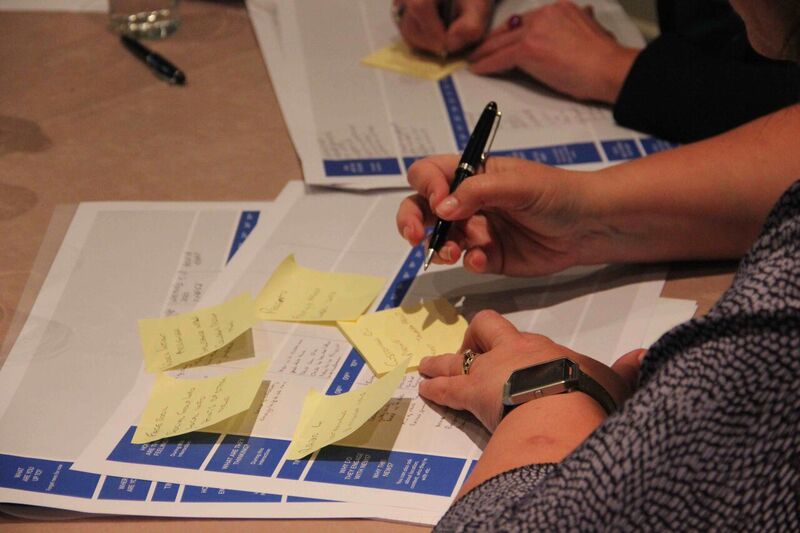NewsThings: exploring what the Internet of Things could be for news and information
With some analysts predicting the Internet of Things as the next digital revolution, and the recent releases of mass market devices such as Google Home and Amazon Echo, the question for news media is how they could capitalise on an emerging world of connected objects, smart assistants and live sensor networks.
NewsThings – a collaboration between the University of Central Lancashire’s Media Innovation Studio, Trinity Mirror and creative agency Thomas Buchanan – seeks to do just that. Using co-design and user-centred design approaches, the project seeks to prototype physical devices that connect to the web and convey news and information in new ways.
John Mills, lecturer and researcher at the Media Innovation Studio, explains that these products could convey rich media experiences or “deconstruct news and provide new ways of conveying either breaking news, richer media or information from within a community”.
Alison Gow, digital innovations editor at Trinity Mirror Regionals, adds:
“The idea of linking digital and physical spaces, and investigating the intersection of news media and consumers/customers, is fascinating but – despite the growth of IoT availability, from Nest to Raspberry pi – not an area legacy media are dedicating time to investigating, so the opportunity to explore this area, with NewsThings, was incredibly exciting.”
Deep insights fuel innovation
The €50k project, which is supported by Google’s Digital News Initiative, runs from March to December 2017, and will place users and industry at the very core of the innovation process. Through running workshops with audience members and representative from Trinity Mirror’s editorial, commercial, marketing and data units, and combining this approach with a range of creative design methods, the team will create three-five prototypes that are directly relevant to both user requirements and industry concerns.

The methods that will be used as part of this process aim to reveal insights that analytic data may not provide. Using workshops that map an audience-member’s engagement with news and information from multiple sources and engaging how they feel about news, rather than merely consumption habits from one publisher, the team hope to uncover insights that could feed directly into IoT product development, and enhance standard data collection and analytics.
Thomas Buchanan is leading on the development and deployment of cultural probes, which are effectively a kit of tasks that readers take on each day. They range from buying a favourite or least favourite paper and talking to friends and family about the content, and reflecting on the result, taking pictures of their surroundings, mapping the news-prompted emotions using emojis and creating their own paper. The tasks are playful, challenging and also underpinned via a number of academic disciplines. These span design, human-computer interaction and behavioural science.
John Mills, researcher at the Media Innovation Studio, explains: “This is an amazing opportunity to explore new, perhaps more compelling, ways of interacting and engaging with news and information through objects and our environment.”
Opportunities through collaboration
Through collaborating or involving a number of stakeholders in both the product design and core partnership more generally, it’s hoped that the physical products and digital services around them will be more relevant to the target audience and industry partner.
“We have a brilliant partnership… Individually we have all been working on innovation projects within journalism and IoT for years, and our expertise across design, technology, journalism and research, makes this project such an exciting one,” Tom Metcalfe, creative director and founder of Thomas Buchanan, suggests.
Alison Gow adds that “it’s really exciting to be involved in something that ties so closely to our values of breaking news, and local information and audience engagement. It’s a unique opportunity to really understand how content delivery and interaction between the worlds of media and tech and the audience can and will quickly evolve.”
Building on solid foundations
The team members have all explored the Internet of Things in unique ways previously, and this project could be seen as a logical extension of this work.
For example, the Liverpool Echo, published by Trinity Mirror, created a IoT version a Liver bird – the symbol of Liverpool – that displayed real time editorial analytic information to the newsroom. Thomas Buchanan specialises in connected objects, and the collaborative and single use Raincloud device streams weather information to an object that displays the information simply.
The Media Innovation Studio has operated in the IoT space for a number of years and has explored situated voting devices for local communities, conductive inks and interactive print, ‘data pets’ that monitor pollution in a local area and connected drones for use in media, humanitarian aid and search and rescue scenarios. It has also connected its office’s coffee machine to its website to share the caffeine consumption to the world.
Looking to the future of NewsThings, Mills feels that IoT could be of great interest to the news media:
“Whether it’s physical objects that convey news, such as the growing range of smart home assistants, locative broadcasting via beacons or creating new stories from connected sensor networks data-drive journalism, the Internet of Things and our growing immersion in digital technologies will create both challenges and opportunities for the sector for at least the next five years and well beyond,” Mills suggests.
CONTACT POINT

John Mills, Lecturer and Researcher, Media Innovation Studio
Web: http://mediainnovationstudio.org/
Twitter: @_johnmills
